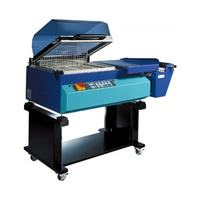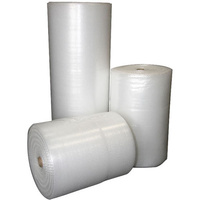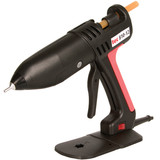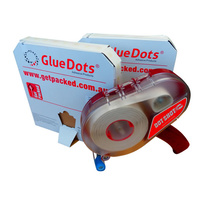Sustainable Packaging and Instapak packaging Foams
290Sustainability has become an important metric in the Protective Packaging Industry over the past several years. Often seen as an extension of the ‘Environmentally Friendly Packaging’ efforts from the ‘80’s and ‘90’s, Sustainability is actually much more broadly based and encompasses far greater concerns than landfill avoidance and controlling litter. One term most often used to describe Sustainability is that it is “Holistic” in nature – involving broad based consideration of all of the various elements that go into the process and product. Additionally, it must be noted that Sustainable Packaging cannot be considered only by itself.
Sustainability overall includes Sustainable Packaging, Sustainable Products,
Sustainable Processes, Sustainable Manufacturing, Sustainable Industries and Sustainable Economies. One element of this hierarchy cannot be considered on its own. Sustainable Packaging should only be considered within the context of the other levels of this hierarchy.
One approach to assessing sustainability of packaging or packaging materials is through the use of Life Cycle Assessment (LCA). In this process, each step in the creation, distribution, use and ultimate disposal of the package or material is evaluated in terms of the raw materials and energy input into each stage of creation compared with the products created along with the by-products of the process including air emissions (Green House Gasses, Oxides of Nitrogen, Dust and Particulate, etc.),
Water emissions and solid wastes generated. The obvious goal is to minimize the materials and energy going into each phase, maximize the product coming out and reduce or eliminate the detrimental emissions (air, water and solid waste) created in the process. Typically the Analyses starts with mining the ores, pumping the petroleum, growing the crops, etc., that goes into creating the raw materials that go into the production of the package or material. Next is the energy required to transport the raw materials (along with the emissions created by this transportation) and then doing the same for the manufacturing process and then the distribution process, the use phase and then eventually the recycling and/or disposal stage. Using existing LCA processes these factors can then all be combined to create a Life Cycle Inventory which can then be used to assess the overall impact this package or material will have on the overall environment. The assessment can also be effectively applied to the process of improving the environment profile of the package or material.
When looking at Instapak light density foams from this perspective we see that there are significant efficiencies in the transportation phases, particularly between the production of the product (chemicals) and the ultimate end-user. Consider that two 55-gallon (250 litre) drums of chemical (One “A” + One “B”) weight just over 1000 pounds (453 kilos). Considering yield loss during the foaming reaction, these drums will create 3000 cubic feet (914 metres) of 0.25 pounds per cubic foot Ultralite void fill foam. A 45’ (13.7 metres) trailer has a usable internal volume of 3100 cubic feet (944 metres) which means that one set of drums of chemical for this product will create essentially a 45’(13.7 metres) truck load of void fill material. A typical 40” x 48” pallet will hold 4 drums of chemical that will then create 2 x 13.7 metre truckloads of void fill. A 45’ (13.7 metre) trailer will hold 26 40” x 48” pallets which comes out to 52 trailer loads of void fill for every truck load of Instapak Ultralite chemicals.
Using a similar calculation process for analysing currently available machine crumpled paper void fill, after ‘fluffing up’ the rolls of paper through the crumpling machine, a pallet load of paper creates a little over a half a trailer of void fill.
It takes 4 pallet loads of paper to create the same amount of void fill as can be created by 1 pallet load of Ultralite chemicals.
(Other Instapak foam formulations will have similar efficiencies in this area, with somewhat different actual values).
So from the above, it can be seen that there are considerable reductions in the number of trucks required, the fuel consumed, the emissions created, the solid particulate created (i.e., soot), in warehousing required, the number of pallets required and handling.
From a use perspective for cushioning, blocking and bracing or void fill, Instapak is simple, fast and easy to use. It is light density, high performance protective packaging material, which saves on shipping costs and packaging weight. When received by the consumer, there are several options available. The first is that the cushions can easily be reused for future shipments as either void fill or cushioning.
The cushions are pliable and can be manually formed around contents in a future pack to provide protection for the product being shipped.
The cushion can be discarded as municipal solid waste. In those communities where municipal Waste to Energy (WTE) Incineration facilities are available, these cushions will provide a positive contribution to the combustion of the waste being processed.
The cushions have BTU content comparable to certain grades of fuel oil and can help sustain the combustion levels required for mixed waste to help offset fractions which might be wet or harder to burn.
If placed in municipal landfill, the cushion will compress readily to occupy minimal space in these facilities. Tests have shown that mechanical pressure of about 5 psi will immediately compress these foams to 10% of their use-volumes (a 90% reduction in space occupied). The following excerpt is from ‘Estimates of the Volume of MSW and Selected Components in Trash Cans and Landfills – Final Report”.
‘At the landfill site, the compactor truck dumps its load, which is spread out and run over by a compaction vehicle. This action by the compaction vehicle is important.
Under the wheel of the vehicle, pressures as great as several thousand pounds per square inch may be exerted. This action breaks glass containers, ruptures plastic bottles and further compresses many other items. As the material is covered in the landfill, the weight of the waste and soil will exert a steady, sustained pressure; this pressure will typically be about one pound per square inch for each yard depth of waster and cover. A typical pressure is about 10 (4.53 kgs to 9.07 kgs) to 20 pounds per square inch, but pressure is much lower near the top of the landfill and greater at depths of more than 60 feet (1.28 metres). Therefore, the action of the compaction vehicle is important in final volume densities. … Typical landfill densities in a modern properly-operated landfill are in the range of about 800 (362.8 kgs) to 1400 (635 kgs) pounds per cubic yard (30 to 52 pounds per cubic foot). However, these density values include some construction debris and industrial wastes deposited with MSW. We estimate the density of MSW alone to be in the range of 800 (362.8 kgs) to 1000 pounds (453.59 kgs) per cubic yard (30 (13.6 kgs) to 37(16.78 kgs) pounds per cubic foot).
As can be seen from this information, as Instapak cushion placed in a land-fill as part of an overall MSW load would immediately be compressed easily up to 90% by the compactor truck and would remain compressed under the load of the rest of the materials in the fill. Once entombed in the landfill, the cushion is bio-stable and will not produce by-products of degradation such as leach ate that could possibly contaminate nearby surface or groundwater. It would also not create methane gas as a result of anaerobic decomposition. It should be noted that the Environmental Protection Agency (EPA) states that the largest point source of methane gas generation in the US is from the anaerobic decomposition of biodegradable materials present in landfills. Furthermore, methane has 23 times the potential global warming impact as carbon dioxide. So, biodegradation in modern landfills is not necessarily a potential fate to be desired.
If the recipient is reluctant to throw the cushion away in the trash, we print a series of environmentally-related messages on all of our Instapak films for packaging. We describe the volume reduction resulting from compression in landfill operations.
We explain the fuel contribution in WTE combustion facilities’. And we provide a contact number by which the recipient can contact Sealed Air for information regarding our foam return program or by going to www.sealedair.com, the recipient can also obtain complete details on how they can participate. In this program, we provide 9 locations in the US (26 globally plus the VfW and Interseroh locations in Germany required by their DSD regulations) where these cushions can be sent. Since very few communities have available recovery infrastructures for most plastic packaging materials, we established this program more than a decade ago to provide this option for those who receive Instapak cushions in packages shipped from our customers.
With all this said, we know we still have work to do to increase the Sustainability of our products. We currently have active R&D programs to develop materials and processes, which will enable us to increase the level of renewable materials we can incorporate into our high performance packaging foam formulations. We are examining ways we can increase the levels of recycled materials we can use to produce both the foams and the films we provide. We are exploring more effective and efficient ways our materials can ultimately be disposed of.
Instapak packaging foams are high performance, lightweight cushioning blocking and bracing and void fill materials. Our objective is to improve the aspects of the Life Cycle Assessment where we can minimize our environmental footprint while maintaining the superior level of packaging performance our customers have come to demand from our products.







